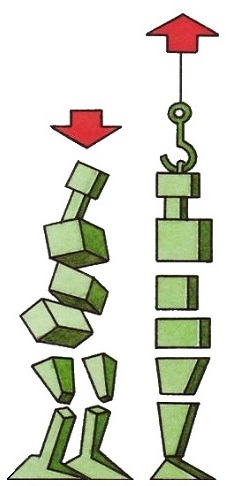|
|
||
|
John Miller Home |
||
|
Over the weeks, months, years and decades, tight and weak muscles, exacerbated by poor sitting posture cause bones in the vertebral column to move out of alignment, stretching ligaments, tendons and muscles beyond their pain threshold and eventually leading to the herniation of discs. This is what is meant by personally-generated musculo-skeletal dysfunction.
The medical diagnostic regimes being inadequate or non-existent, the treatment regimes are universally renowned for palliating the problem, rather than guaranteeing people with back pain a prescription to restore poor function to good.
The treatment pathway is frequently one that leads first to pain relief, è increasingly higher doses of pain relief è manipulative therapy at the spot where it’s painful è surgery and frequently è back to pain relief. Most medical diagnostic regimes start and end with an examination (or imaging) at the spot where it’s painful, particularly the spot where imaging detects bones to be out of alignment and discs to be herniated.
This fascination with the spot where it hurts distracts physicians and physical therapists from establishing the underlying cause(s) of the mis-alignment of bones and the herniation of discs.
When it’s all boiled down, the treatment focus at the spot where it hurts has its genesis in dualism – where individual parts of the body are treated in isolation to the body as a whole.
Taking the view that the bones of the lower back are part of a musculo-skeletal ecosystem, where all bones and all major muscle groups are connected in some way, is more likely to be the pathway to finding a cause and treating it. When the system is fixed, the parts will be fixed. Isolating the treatment at the spot where it hurts is a recipe for failure.
Now click through to the Global Back Care website and start the process of restoring poor health to good by selecting an ebook.
In the meantime stay tuned, highly tuned and remember, it's a big ask expecting to get bey-tter by having someone do something to you, sooner or later you have to do something to yourself..
John Miller
|

